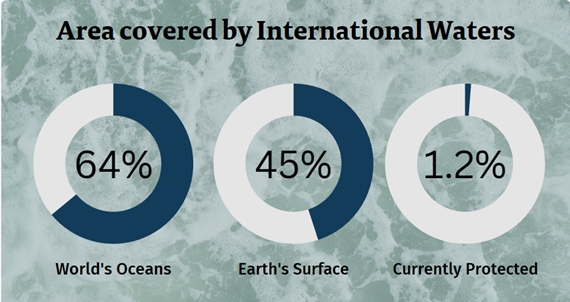PREVIOUS
UN High Seas Treaty
March 13 , 2023
947 days
776
0
- Members of the United Nations have agreed on an international treaty to protect biodiversity in international waters, which cover nearly two-thirds of the ocean.
- It is also referred to as the ‘Paris Agreement for the Ocean’.
- In 1982, the UN Convention on the Law of the Sea, or UNCLOS was adopted.
- The Convention delineated rules to govern the oceans and the use of its resources.
- But there was no comprehensive legal framework that covered the high seas.
- Parts of the sea that are not included in the territorial waters or the internal waters of a country are known as the high seas, according to the 1958 Geneva Convention on the High Seas.
- It is the area beyond a country’s Exclusive Economic Zone which extends up to 200 nautical miles (370 km) from the coastline.
- No country is responsible for the management and protection of resources on the high seas.
- The high seas account for more than 60% of the world’s ocean area and cover about half of the Earth’s surface.
- At the COP of the Convention on Biological Diversity (COP15), countries agreed to protect 30% of oceans by 2030.
- It is a part of the ’30 x 30 pledge’ made by the historic Kunming-Montreal Global Biodiversity Framework (GBF).

Leave a Reply
Your Comment is awaiting moderation.


